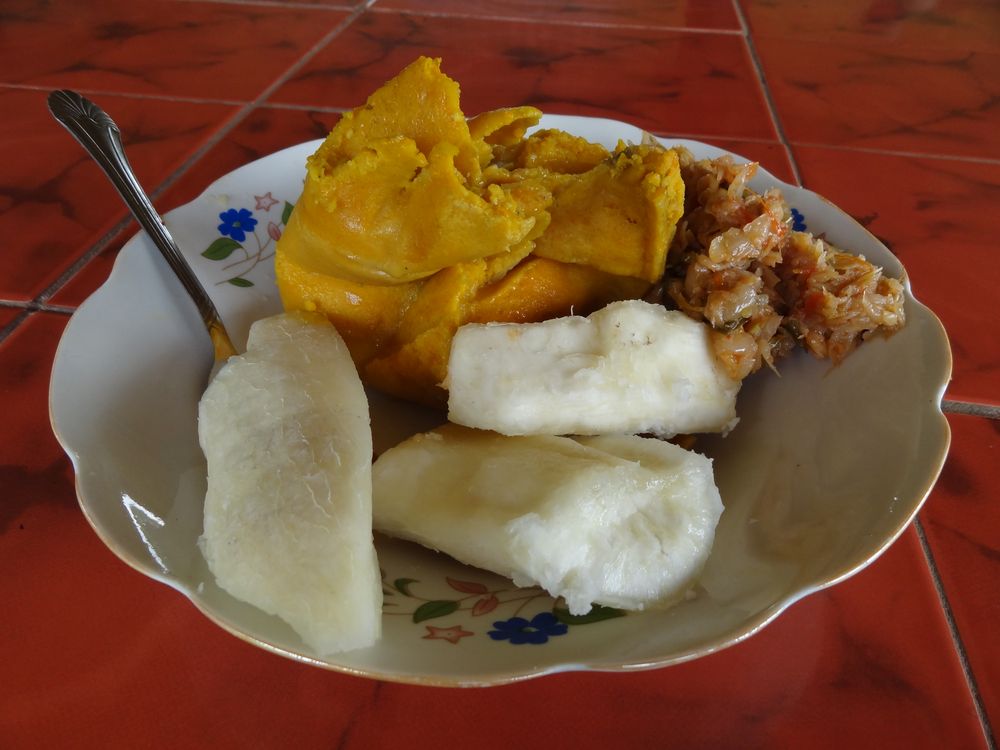Partner Institute Contacts
NaCRRI (Uganda): Robert KAWUKI
CIAT (Colombia): Thierry TRAN
UAC-FSA (Benin): Noël AKISSOE
More about Boiled Cassava?
Kelechi Uchendu, Damian N. Njoku, Ugochukwu N. Ikeogu, Daniel Dzidzienyo, Pangirayi Tongoona, Samuel Offei & Chiedozie Egesi (2022). Genotype‑by‑environment interaction and stability of root mealiness and other organoleptic properties of boiled cassava roots. Scientific Reports 12(1), December 2022. https://doi.org/10.1038/s41598-022-25172-8 -Supplementary Information The online version contains supplementary material available at https://static-content.springer.com/esm/art%3A10.1038%2Fs41598-022-25172-8/MediaObjects/41598_2022_25172_MOESM1_ESM.pdf
Emmanuel Oladeji Alamu, Busie Maziya-Dixon & Alfred Gilbert Dixon (2022). ) Evaluation of the pasting characteristics of cassava roots grown in different locations in Nigeria from the Genetic Gain Assessment trial. Frontiers in Sustainable Food Systems, 6, 1012410. https://doi.org/10.3389/fsufs.2022.1012410
Wasiu Awoyale, Hakeem Oyedele, Michael Adesokan, Emmanuel O. Alamu & Busie Maziya-Dixon (2022). Can improved cassava genotypes from the breeding program substitute the adopted variety for gari production? Biophysical and textural attributes approach. Frontiers in Sustainable Food Systems, 6, 984687. https://doi.org/10.3389/fsufs.2022.984687
Wasiu Awoyale, Hakeem Oyedele, Ayodele A. Adenitan, Michael Adesokan, Emmanuel O. Alamu & Busie Maziya-Dixon (2022) Correlation of the quality attributes of fufu flour and the sensory and instrumental texture profiles of the cooked dough produced from different cassava varieties, International Journal of Food Properties https://doi.org/10.1080/10942912.2022.2026955
Lydia Ezenwaka, Dunia Pino Del Carpio, Jean-Luc Jannink, Ismail Rabbi, Eric Danquah, Isaac Asante, Agyemang Danquah, Essie Blay, Chiedozie Egesi (2021) Genome-Wide Association Study of Resistance to Cassava Green Mite Pest and Related Traits in Cassava, Crop Science https://doi.org/10.2135/cropsci2018.01.0024
Christiane Koffi Adjo, Boni N’Zué, Catherine Ebah Bomoh, Sidoine Essis Brice, Sylvie Diby N’Nan Affoué, Konan Dibi, Amani Michel Kouakou & Assanvo Simon Pierre N’guetta (2021). Agronomic Evaluation of Some Cassava Varieties (Manihot Esculenta Crantz) and Sensory Evaluation of Attieke from These Varieties in Three Agro-Ecological Zones of Cote D'ivoire. International Journal of Agriculture and Biological Sciences. Nov & Dec 2021 December 31, 51-67. http://www.ijoabs.com/publications-of-ijoabs/article/969/#abstract et http://www.ijoabs.com/publications-of-ijoabs/article/969/?download


